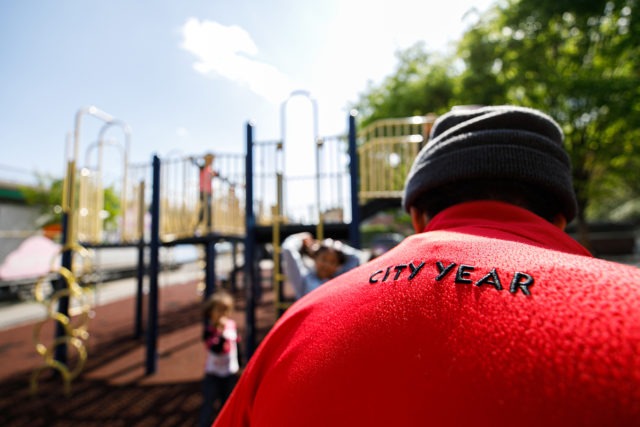Integrating social, emotional and academic development
This guide provides practices for integrating social, emotional and academic approaches to support improved student and school outcomes. We believe it is particularly useful as school leaders and educators prepare to welcome students back to school following closures due to the COVID-19 pandemic.
How to create an integrated approach
The results from recent studies, combined with what we’ve learned from our work with more than 300 schools across the U.S., provide insight into a broader set of practices that practitioners may consider as steps to creating a more integrated approach to social, emotional and academic development.
Selecting and implementing an approach that’s right for your school community
Practices to considerThe purpose of this guide is to provide practitioners and policymakers with practices, tools and recommendations for integrating social, emotional and academic approaches to support improved student and school outcomes. Through this guide, City Year hopes to share some lessons learned from more than a decade of partnering with educators, schools and communities to support student success in schools that serve communities affected by systemic inequities, along with research and evaluation of our work—including a recent study conducted by the Everyone Graduates Center at Johns Hopkins University on City Year’s approach to strengthening students’ social, emotional and academic development.
DownloadReadiness conditions to being the work
Before schools or districts can begin the work of supporting students’ social, emotional and academic development more holistically, certain conditions must be in place. The school must have a commitment to and structures to enable regular progress monitoring, such as reliable access to student data (an Early Warning Response System is ideal); staff and partner commitment to adapt and innovate; and a sustained investment of time, tools, resources and funding. Unless these readiness conditions are met, the practices that follow are unlikely to be successful.
Assessment resources:
- Determining Readiness for Social-Emotional and Academic Development
- The CASEL Guide to Schoolwide Social and Emotional Learning
- SEL Integration from Transforming Education
Practices to consider when accessing and understanding assets, needs and desired goals of your community
- Conduct asset mapping of capacity, including staff trained to support student well-being (e.g. Student Success Coaches) for students who require more consistent day-to-day social-emotional and academic support. This will allow for deeper understanding of whether additional capacity, such as the cost-effective resource of national service, might be needed to bring an integrated approach to social, emotional and academic development (SEAD) to life in your school.
- Build in intentional time at the beginning of the year for relationship development with students and to promote a strong sense of community.
- Enhance family and community understanding of the value of social-emotional and academic development.
- Co-create whole school and individual social-emotional and academic goals with students. Share goals and progress with all school staff and partners (AmeriCorps members, volunteers, afterschool staff, paraprofessionals) and families.
- Measure students’ social-emotional status and development as well as the level of environmental challenge they face, such as implicit bias, food insecurity, homelessness, lack of sleep and/or exposure to violence.
- Assess your school climate at the beginning of and in the middle of the school year.
- Track when, where and why disciplinary incidents occur. Look for patterns and track office referrals as well as suspensions.
- Consider how you will integrate SEAD into all aspects of the school day, including afterschool.
Processes to consider when selecting and implementing an approach that’s right for your school community
Selection should be based on the specific assets, needs and goals of your community identified in Step 1. The practices included in this section range from recommendations for increasing capacity to approaches to staff training, curriculum selection and providing research-based student supports.
We know that whole school social, emotional and academic development practices have the potential to benefit all students. Based on our innovation and design work at Compass Academy, a public charter school in Denver, and collaborative efforts with schools across the country through the Network for School Improvement, we have identified a number of systems, structures, tools, resources and instructional practices that enhance all students’ social, emotional, and academic development, including culturally and linguistically diverse learners and students with learning disabilities. The practices and corresponding resources below are annotated (*) to spotlight those that are particularly impactful for diverse learners.
Whole school practices
- Organize your school in a developmentally appropriate way for the population you serve. One way to do this might be to adopt a holistic, asset-based approach to supporting student growth.
- Deploy AmeriCorps members as Student Success Coaches to support teachers in ensuring all students have access to developmental relationships and research-based supports designed to meet individual student needs and create positive, nurturing, culturally responsive, identity-safe, and instructionally rich learning environments
- Emphasize personalized approaches to student learning based on an understanding of student strengths and areas for growth as recorded by a measure of social-emotional development. In addition, practitioners should use a predictable and practical approach to instruction that is characterized by high expectations, individualization, growth mindset and positive disposition.
- Provide staff training on social-emotional skill development, relationship building and trauma-informed practices that are integrated into teacher training, coaching and development.
- Select curriculum and supports that align to social-emotional goals. Build and strengthen staff understanding on how curriculum aligns. Ensure that the curriculum tends to social, emotional and academic development and is aligned with the school mission and vision.
- Encourage and incorporate student voice in creating and implementing school discipline policies and in-school culture initiatives. Conduct equity checks to ensure that opportunities to participate are available to all students.
- Implement a morning greeting or welcome activity, where every student and faculty member is greeted as they enter the school each morning. This activity creates an opportunity to foster positive school culture and climate while encouraging regular school attendance and promoting citizenship and positive behavior.
- Organize affinity and shared interest groups for students to encourage community building and belonging (e.g. inclusivity leaders, student squads with shared interests, study teams, inclusivity clubs).
Classroom practices
- Link social, emotional and academic competencies to class content when possible. For example, in English Language Arts class, connect the process of writing in English to the social-emotional competency of positive risk-taking.
- Encourage students to develop their own classroom norms and worktime expectations based on the social, emotional and academic competencies being taught.*
- Implement Check In, Check Out interventions. This tool can be used to create a mutually agreed upon set of expectations for social-emotional skill expression; create non-verbal cues and signals with a student; teach explicit relaxation techniques; and create a process for students to take breaks and determine, in partnership with an educator, what breaks look like.
- Create intentional spaces for competency development and reflection.
Practices to consider when evaluating, reflecting and ensuring continuous improvement
- Incorporate evidence of belonging and trust into school meetings and approaches to supporting students, including the use of multi-tiered systems of support and early warning response systems.
- Form and track schoolwide goals through continuous improvement cycles where next steps and results are identified and tracked.
- Develop a system for tracking progress and growth of competencies (e.g. portfolios, reflection journals, a record of whole-class debriefs). Create structures that allow teachers and students to share their growth and experiences with social, emotional and academic development.
- Solicit teacher and student feedback consistently around program elements and use data to inform next steps. Use both self-report and observational tools.
- Repeat cycle of continuous improvement after the evaluation stage, repeating the identifying, selecting and implementing stages.
City Year's Continuous Improvement toolkit
We know our educators can position students for lasting success. That is why we are eager to showcase our free, continuous improvement (CI) digital toolkit. Educators can use this resource to understand why CI is important, and how to implement it, helping to improve inequitable student outcomes.
Explore resources















